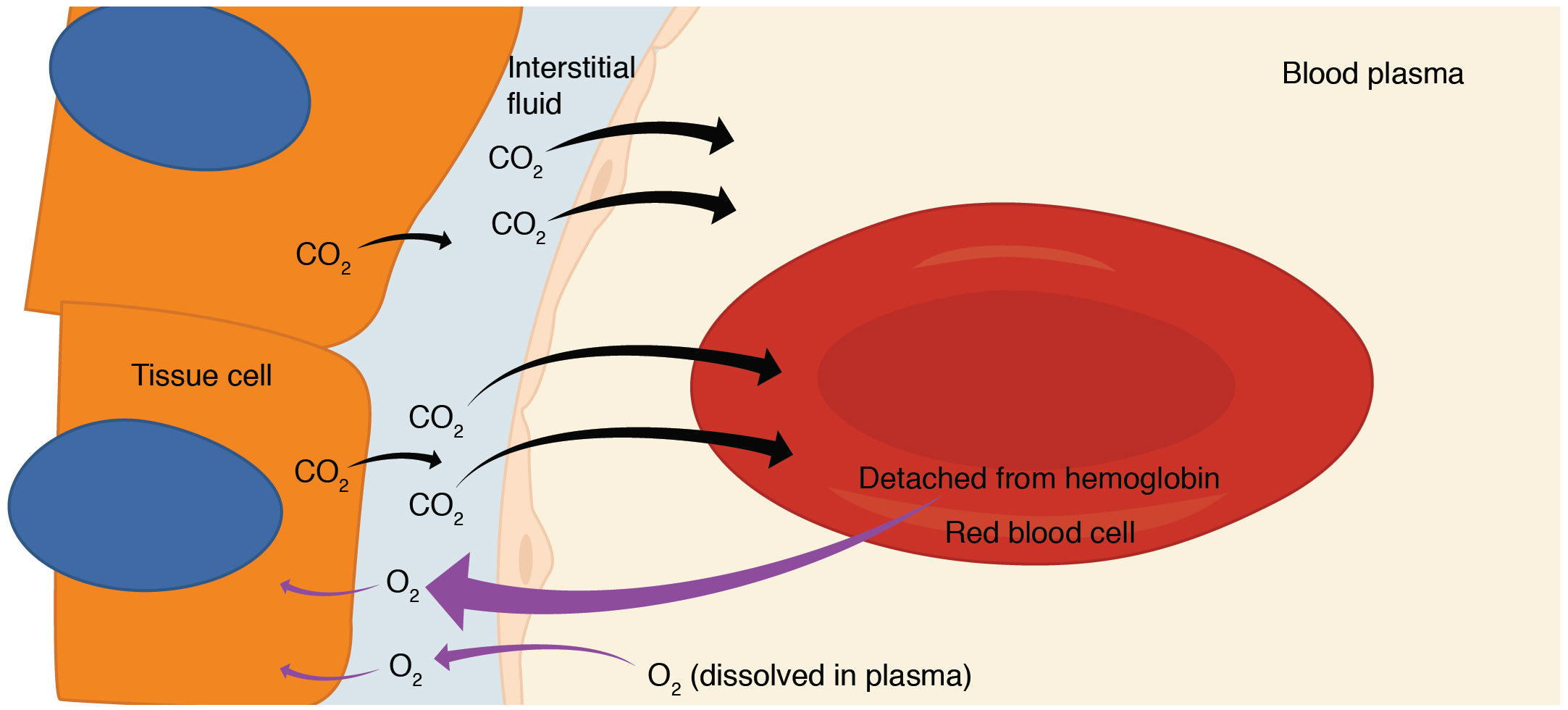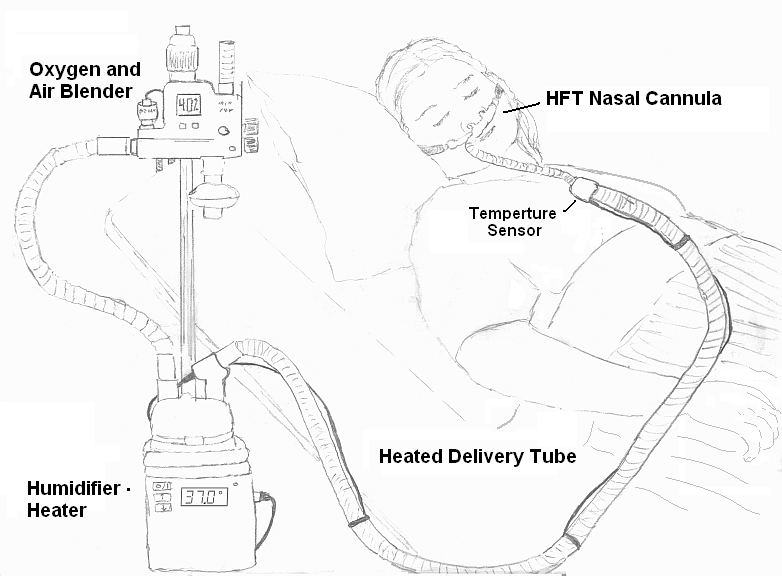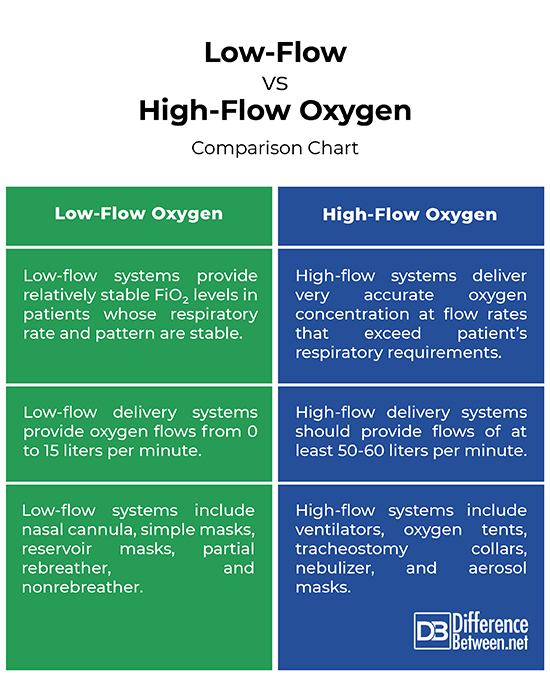Difference Between Low Flow and High Flow Oxygen
Supplemental oxygen is a lifeline for many critically ill patients and it can be delivered in nonintubated patients via several devices. The oxygen delivery devices can be divided into two major groups: Low-flow and High-flow oxygen systems. Understanding each type of system is essential for appropriate clinical application. But, do not confuse low-flow systems with low concentration of oxygen concentration. High-flow does not mean high. The flow refers to the liters of oxygen administered to the patient per minute. Let’s take a good look at the two delivery systems.

What is Low-Flow Oxygen?
Low-flow delivery systems are specific devices that generally deliver oxygen at flow rates lower than patient’s ventilatory requirements. These are the devices that are used when consistency in fraction of inspired oxygen (FiO2) delivery is not crucial. It is based on the patient’s anatomic reservoir and minute ventilation. Low-flow delivery systems provide oxygen flows from 0 to 15 liters per minute.
Low-flow oxygen delivery systems include nasal cannula, simple masks, reservoir masks, partial rebreather, and nonrebreather/Tavish mask. Nasal cannulas are one of the most common and widely used oxygen delivery systems used both for hospital inpatients and for outpatients. The major advantage of low-flow delivery systems are the ease of use and patient comfort. To ensure proper oxygen delivery, cannulas and masks must fit properly on the patient’s face and nose.

What is a High-Flow Oxygen?
High-flow oxygen delivery is a non-invasive respiratory support for critically ill patients to deliver very accurate oxygen concentration at flow rates that exceed patient’s respiratory requirements. It is usually defined as the administration of gas flow above 6-15 liters per minute. High-flow systems refer to the second group of oxygen delivery devices that are capable of delivering at least 40 liters per minute of conditioned gas, providing an accurate FiO2 regardless of the patient’s breathing pattern.
High-flow oxygen therapy can be used to deliver respiratory support in patients with acute hypoxemic respiratory failure and also to prevent subsequent intubation. In nonintubated patients, venturi masks are probably the only devices capable of delivering controlled high-flow oxygen concentration. Ventilators, oxygen tents, tracheostomy collars, and aerosol masks are examples of high-flow oxygen delivery systems.
Difference between Low Flow and High Flow Oxygen
Flow Rate
– The flow refers to the liters of oxygen per minute administered to the patient. Oxygen therapy is a lifeline for many critically ill patients and can be delivered using a low flow or high flow delivery system. Low-flow delivery systems are used when consistency in fraction of inspired oxygen (FiO2) delivery is not crucial, providing oxygen flows from 0 to 15 liters per minute. High-flow systems deliver FiO2 at flow rates that meet or exceed the patient’s peak respiratory requirements. High-flow systems are capable of delivering at least 40 liters per minute.
Delivery Systems
– Low-flow oxygen delivery systems include nasal cannula, simple masks, reservoir masks, partial rebreather, and nonrebreather. Nasal cannulas are one of the most common and widely used oxygen delivery systems used both for hospital inpatients and for outpatients. High-flow delivery systems are either air-entrainment devices or blending systems. Air-entrainment devices include venture masks and mechanical aerosol. Blending systems premix high-pressure oxygen and air sources to get the desired FiO2, and include face tents.
Low-Flow vs. High-Flow Oxygen: Comparison Chart

Summary
Both high-flow and low-flow oxygen delivery systems are capable of administering a wide range of FiO2. However, the terms high and low do not reflect the delivered FiO2; in fact, it refers to the flow of gas delivered to the system. Low-flow systems are used in more critically stable patients; they deliver oxygen at flow rates below the patient’s respiratory requirements. High-flow systems are used in patients with a variable respiratory rate and pattern; they deliver very accurate oxygen concentration at flow rates that exceed patient’s respiratory requirements. High-flow delivery systems should provide flows of at least 50-60 liters per minute.
What does low flow oxygen mean?
Low flow oxygen refers to the FiO2 which is directly tied to flow rate. Oxygen is a gas that the human body needs to work properly. A drop in oxygen saturation below your respiratory requirements indicates that you need supplemental oxygen.
What is the purpose of high flow oxygen?
If conventional oxygen therapy does not work, high flow oxygen therapy delivers oxygen at higher than normal flow rates to help you ease with your breathing. This is used for patients who have trouble breathing or are in respiratory distress.
What is low flow oxygen used for?
Low flow oxygen therapy is used in more critically stable patients to deliver oxygen at flow rates below the patient’s inspiratory flow rate. A low flow is when the system is unable to meet the ventilator demand of the patient. Low flow systems are capable of delivering a wide range of FiO2 to the patient depending on how fast breathing is.
What is a high flow oxygen system?
A high flow oxygen system exceeds the patient’s inspiratory flow rates and provides a precise and consistent FiO2 regardless of the patient’s breathing pattern.
Is CPAP high flow oxygen?
Continuous positive airway pressure (CPAP) is a type of non-invasive ventilation or breathing support. It is a high flow system that generates a positive and expiratory pressure.
How many liters is high flow oxygen?
High-flow delivery systems should provide flows of at least 50-60 liters per minute.
- Difference Between Caucus and Primary - June 18, 2024
- Difference Between PPO and POS - May 30, 2024
- Difference Between RFID and NFC - May 28, 2024
Search DifferenceBetween.net :
Leave a Response
References :
[0]Criner, Gerard J., Gilbert E. D'Alonzo. Critical Care Study Guide: Text and Review. New York, United States: Springer-Verlag, 2002. Print
[1]Ahrens, Thomas, et al. Essentials of Oxygenation: Implication for Clinical Practice. Massachusetts, United States: Jones & Bartlett Learning, 1993. Print
[2]Carlucci, Annalisa and Salvatore M. Maggiore. High Flow Nasal Cannula: Physiological Effects and Clinical Applications. Cham, Switzerland: Springer Nature Switzerland AG, 2021. Print
[3]Image credit: https://cnx.org/resources/51782420a77f633a98451518ad50874b71d9c762/2320_Fig_23.20_NEW_KGX.jpg
[4]Image credit: https://commons.wikimedia.org/wiki/File:HFT_diagram.png
